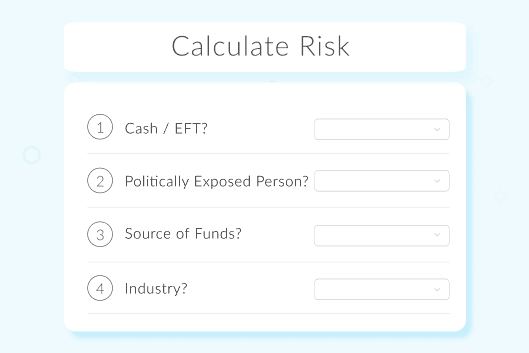
In our last blog, There is more to KYC than Credit Checks - Client Risk Assessment for Estate Agents, it was discussed that in addition to checking credit bureaus and assessing client credit scores, there are several other risk factors that should be taken into account in terms of the property / real estate industry, which combined, enable these industry entities to better know their client and form a clear picture of the overall AML/CFT risk they pose.
In the below post we aim to discuss examples of how to approach a risk assessment based on some identified risk factors.
Some examples of identifying a client as high risk:

Cash is received as a property purchase deposit or consistent rental payment, the client is a politically exposed person, works at a State-Owned Entity, the main source of funds is a gift or donation and the price of the property appears to be outside of the client’s financial capability, these combination of risk factors would likely result in the client being rated as high risk.
Next steps once the client has been identified as high risk:
For this relationship or transaction to continue, enhanced due diligence would need to be conducted, which includes senior management approval for the relationship or once-off transaction, the client’s wider source of wealth and funds being established for the transaction/s and enhanced ongoing monitoring conducted for the business relationship.
The client’s risk rating has a considerable impact on the level of due diligence focus clients receive. A higher risk client doesn’t necessarily in itself lead to illicit activities or intentions, rather it can act as a reminder that there may be a higher susceptibility. In the example above, enhanced due diligence would mean that instead of client disclosure in a client mandate or profile form being acceptable from a standard due diligence perspective for low or medium risk clients, sighted and certified copies of documents would be required as well as documentary evidence of source of funds and wealth from a higher risk perspective. If for example, a client approached you seeking to purchase or rent a property and they had a low risk business industry such as Accommodation, Travel & Tourism, the source of funds was from income from employment, the client has no adverse media surrounding them and the form of the funds transfer was an EFT, this may point towards the client being rated as low or medium risk and therefore subject to less stringent due diligence protocols as the money laundering risks are lower.
Assessing a client’s risk, and then if necessary performing enhanced due diligence is a vital and necessary element of the FIC Amendment Act as it assists the entity in identifying any potential terrorist funding or money laundering risk that a client can pose to a business.